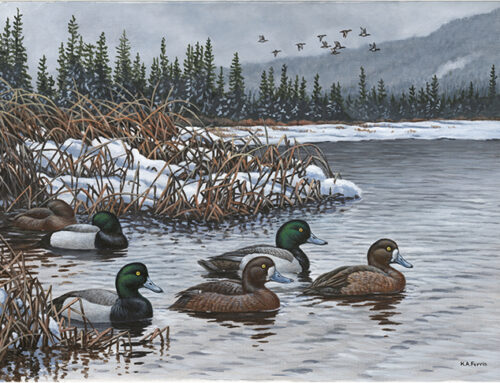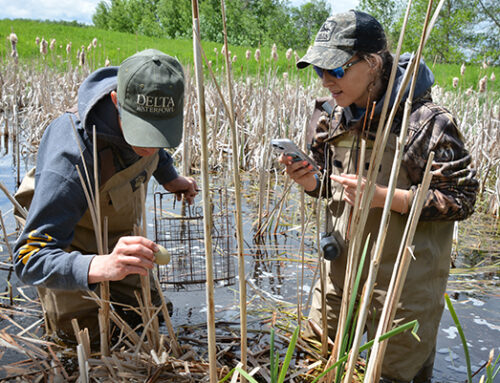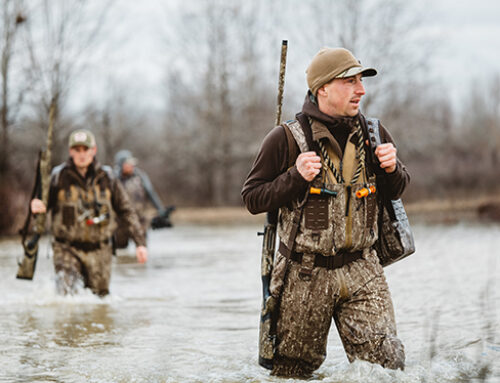Wildlife Habitat Canada Grant Adds Hen Houses

By Paul Wait
Even though the prairie pothole region — North America’s “duck factory” — is buried under a thick sheet of ice and snow, Delta Waterfowl technicians are working to produce more ducks for next year’s fall flight.
Installers have taken to the frozen potholes, drilling through ice and mud to erect 900 new Hen Houses, cozy nest structures that will welcome mallards back from the south when spring returns to the Canadian and U.S. prairies.
The latest additions to Delta’s Hen House Program are funded in large part by an $80,000 grant from Wildlife Habitat Canada, the organization that invests in conservation programs through money collected from the sale of the Canadian Duck Stamp. The grant pays for construction and installation of 500 Hen Houses in Canada.
“Through this grant, Wildlife Habitat Canada is helping to expand Delta’s duck production programs, which benefits duck hunters across Canada and throughout North America,” said Matt Chouinard, senior waterfowl programs manager for Delta Waterfowl.
Hen Houses, which are used primarily by mallards, are wire nesting cylinders placed over water in small wetlands. Delta focuses nest structures in wetland areas with limited nesting cover where predators such as red foxes, raccoons and skunks can easily find duck nests in sparse patches of grass. Research has shown that mallards using Hen Houses in some intensely farmed regions of Canada are 12 times more likely to hatch a nest than a mallard nesting in the grass.
The 500 Hen Houses covered under the WHC grant will be installed in Saskatchewan, Manitoba, Alberta and Ontario. Delta is placing an additional 100 in Alberta, 100 in Saskatchewan and 200 in North Dakota this winter.
By spreading nesting structures across southern Canada, Delta’s duck production programs will benefit hunters in all four flyways. The Ontario installations will occur in several areas, including Norfolk County and near Orangeville.
“Those will be our first Program Hen Houses in those areas, which are really good landscapes with a lot of nesting mallards,” Chouinard said.
With the new nest cylinders in place this winter, Delta will have more than 7,500 Hen Houses in the United States and Canada, structures that produce an estimated 35,700 hatched ducklings annually.
“Hen Houses are the most cost-effective management tool to produce mallards,” Chouinard said. “For duck hunters, that means more mallards migrating south every fall for each dollar spent.”






Where can we buy some?